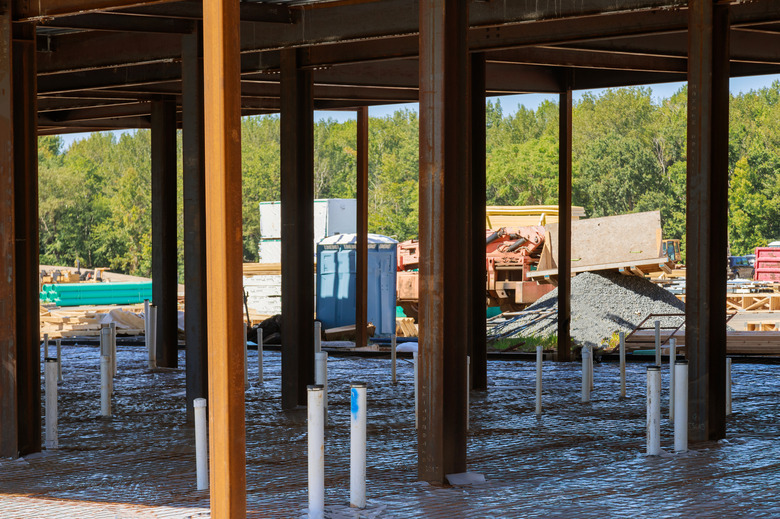Best Type Of PVC Pipe To Use Underground
We may receive a commission on purchases made from links.
Polyvinyl chloride, or PVC, pipe is a popular choice for underground use. The material is durable and long-lasting, and it's a top pick when choosing pipe for projects such as irrigation/sprinkler systems, outdoor showers, and yard hydrants. Affordable and widely available, PVC pipe stands up well to pressurized water systems. During installation, each pipe section is put together with primer and solvent cement for a permanent, watertight seal.
PVC Pipe Schedules
PVC Pipe
Schedules
PVC pipe comes in a variety of schedules. The schedule refers to the wall thickness of the pipe, which affects the pipe's inside diameter but not its outside diameter. Common schedule types include 40, 80, and 120. You can find the inside diameter of a pipe in the different schedules by consulting an online table, available from many pipe suppliers. The higher the schedule number, the stronger the pipe. Additionally, pipe schedules tend to be different colors. For instance, schedule 40 is often white in color and schedule 80 is usually gray in color. The higher the schedule number, the more expensive the piping is as well.
Generally, when choosing PVC thickness for residential plumbing, schedule 40 is considered ideal and works well for many underground residential applications. There may be extenuating circumstances that could result in the need to install higher than schedule 40, however. For instance, if a frost-protected waterline is required, such as for a yard hydrant installation, the burial depth required might be deeper than 4 feet in very cold climates. In that case, you may want to install schedule 80, instead of schedule 40 as 80 is more durable.
PVC Pipe Pressure Tolerance
PVC Pipe Pressure
Tolerance
Every pipe schedule tolerates a specific pressure range. The pressure rating range is dependent on the diameter of the pipe and is given in pounds per square inch, or psi, indicating the force per square inch of area that the pipe can withstand. Schedule 40 PVC pipe has the following pressure ratings for the most common pipe sizes:
- 1/2-inch: 600 psi.
- 3/4-inch: 480 psi.
- 1-inch: 450 psi.
- 1 1/4-inch: 370 psi.
- 1 1/2-inch: 330 psi.
- 2-inch: 280 psi.
All of these pressure ratings are suitable for most residential underground plumbing applications.
Pipe Burial Depth
Pipe Burial
Depth
How deep you bury pipe depends on your city's plumbing codes. Local plumbing codes vary from region to region and are specific to each city. The codes are created and enforced by individual cities. If you are planning a DIY underground pipe installation, it's best to check with your city building department regarding codes for buried water supply lines. Its guidelines will determine whether you should use 40 or 80 for your residential project.
Not for Above-Ground Use
Not
for Above-Ground Use
If you require above-ground piping for your home project, PVC piping is not recommended. PVC deteriorates when exposed to the UV rays of the sun. Over time in the sun, the piping will discolor and the material's impact-resistance will decrease. This can lead to premature leaks or other problems.
References
- Atkore Heritage Plastics: The Effect of Sunlight Exposure on PVC Pipe, Conduit, and Fittings
- PVC Fittings Online: Common PVC Pipe Used for Irrigation Systems
- PVC Pipe Supplies: Schedule 40 vs. Schedule 80 Pipes and Fittings
- Commercial Industrial Supply: What Type of Pipe to Use for In-ground Sprinkler Systems
